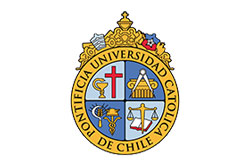Source: WNYC
Photo: bellenews.com
To better survive the economic impact of big storms like Sandy, New York needs a «world class» bus rapid transit system. That’s one of the major recommendations in a draft report commissioned by New York Governor Andrew Cuomo on how to rebuild New York infrastructure post-Sandy.
Bus Rapid Transit — basically, fast buses which run on segregated lanes where users pay off board — mimics a subway system by planning bus routes that can run almost as quickly through streets as trains can underground.
Such a system could be less vulnerable to floods and more able to restart service after big storms. It would also be able to connect neighborhoods that would otherwise be stranded by subway service disruptions.
«A world class BRT network would enhance the resilience and redundancy of the overall transit system,» according to a draft copy of the report which was leaked to the New York Times. The report contained no specific recommendations for funding the system.
It also doesn’t address the thorny political question which frequently accompanies BRT proposals — that of of turning over road space traditionally used by cars to buses only.
The recommendation is part of a set of proposals drawn up by the NYS2100 Commission, one of three large commissions set up by Governor Cuomo to address rebuilding New York in the wake of storm Sandy, which caused over $30 billion in damage. The two other commissions, on emergency response and preparedness, delivered their findings directly to the governor last week. No word on when the final 2100 report will be presented to the Governor, or whether or how he’ll adopt its recommendations.
BRT advocates, like the Institute for Transportation Development Policy, argue that BRT can be built far more quickly and cheaply than subways. The Second Avenue subway has been under development for half a century, by contrast.
«Financial support from the State would be welcome in helping to bring New York City’s ongoing bus system improvement efforts closer to world class ‘gold standard’ BRT,» said ITDP CEO Walter Hook in a statement. «A world-class BRT system would not only have fully dedicated lanes that keep the buses separate from traffic, and off-board fare collection, but also beautiful iconic stations with platforms that allow people to step directly onto the bus.»
The NYS2100 commission is co-chaired by Rockefeller Foundation Chairwoman Judith Rodin and financier Felix Rohatyn. (Rockefeller also funds Transportation Nation.)
The Governor’s office didn’t comment on the draft report, and an MTA spokesman, Adam Lisberg, said the report’s recommendations had not been shared with the MTA.
During storm Sandy, the MTA’s temporary «bus bridge,» which replaced subway service during the period when all the East River tunnels were flooded, came as close to New York has seen of having a true BRT. Though there were long lines to board the buses, the buses, aided by police officers stationed at every corner, zipped through city streets. The ride from the East Village to Barclay’s Center in Brooklyn took about 12 minutes.
The city has also installed several «select bus service» lines, which adopt some features of BRT, including off-board payment.
«BRT corridors that serve as connectors to the subway system would provide riders with muliple options for connections and access to the core,» the report said.
The draft report suggests creating a bus line that would run the length of southern Brooklyn, connecting the D, F, B and Q lines, and a east-west corridor connecting neigborhoods like Bedford Stuyvesant to lines that run through Brownstone Brooklyn, Midwood, and Coney Island.
The draft report notes that transit ridership has increased 60 percent since 1990, but bus line speeds overall have decreased by 11 percent.












